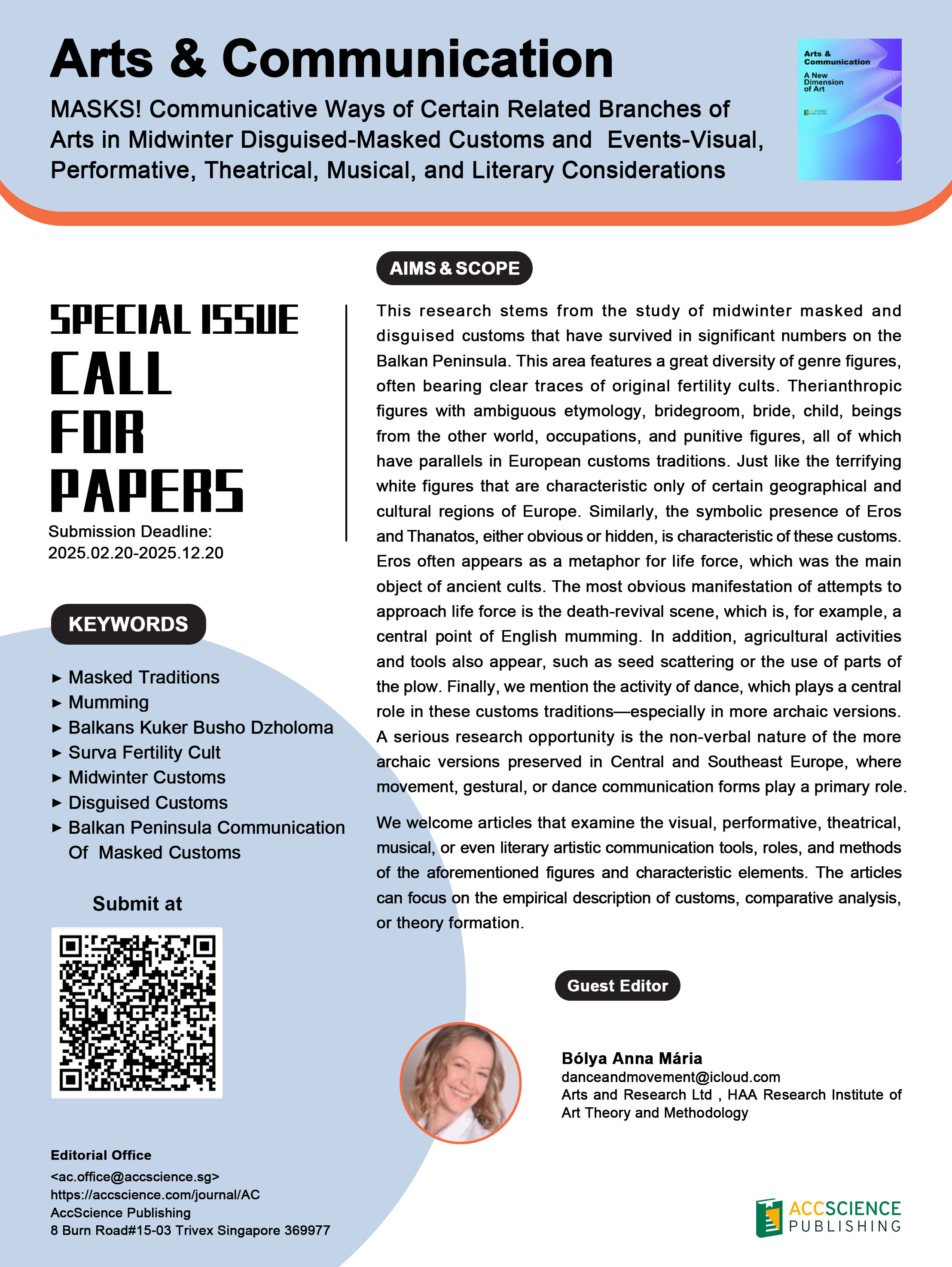MASKS! Communicative Ways of Certain Related Branches of Arts in Midwinter Disguised-Masked Customs and Events - Visual, Performative, Theatrical, Musical, and Literary Considerations

This research stems from the study of midwinter masked and disguised customs that have survived in significant numbers on the Balkan Peninsula. This area features a great diversity of genre figures, often bearing clear traces of original fertility cults. Therianthropic figures with ambiguous etymology, bridegroom, bride, child, beings from the other world, occupations, and punitive figures, all of which have parallels in European customs traditions. Just like the terrifying white figures that are characteristic only of certain geographical and cultural regions of Europe. Similarly, the symbolic presence of Eros and Thanatos, either obvious or hidden, is characteristic of these customs. Eros often appears as a metaphor for life force, which was the main object of ancient cults. The most obvious manifestation of attempts to approach life force is the death-revival scene, which is, for example, a central point of English mumming. In addition, agricultural activities and tools also appear, such as seed scattering or the use of parts of the plow. Finally, we mention the activity of dance, which plays a central role in these customs traditions—especially in more archaic versions. A serious research opportunity is the non-verbal nature of the more archaic versions preserved in Central and Southeast Europe, where movement, gestural, or dance communication forms play a primary role.
We welcome articles that examine the visual, performative, theatrical, musical, or even literary artistic communication tools, roles, and methods of the aforementioned figures and characteristic elements. The articles can focus on the empirical description of customs, comparative analysis, or theory formation.


